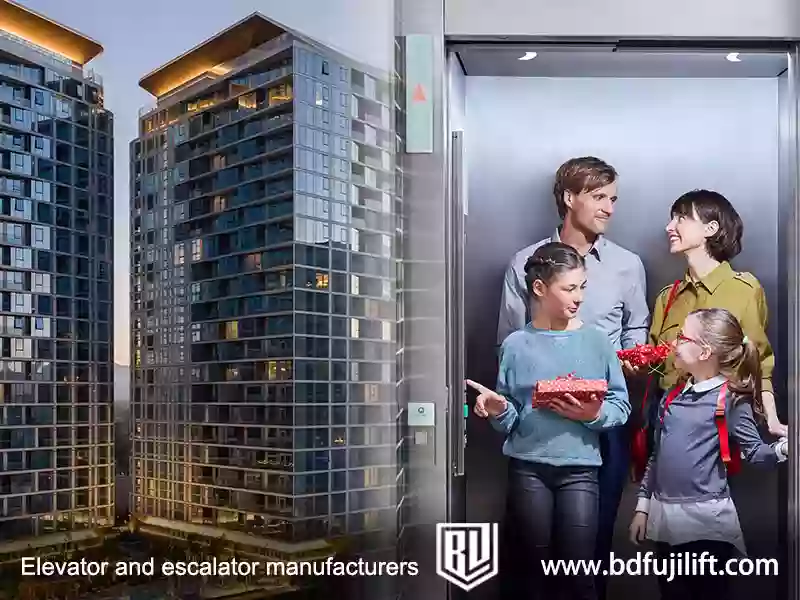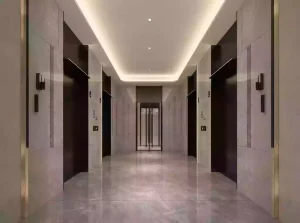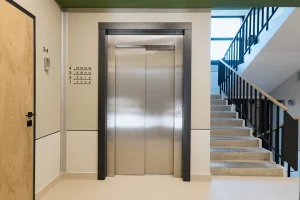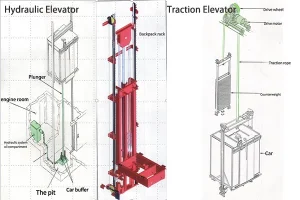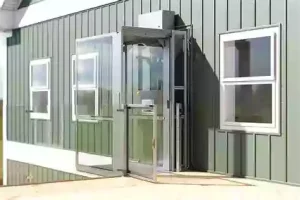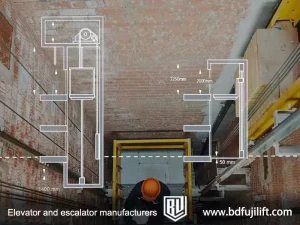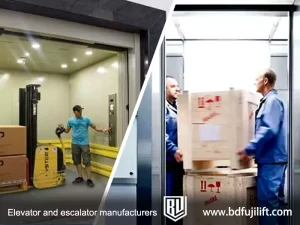Installing an elevator in an apartment is one of the most effective ways to attract customers and increase the building’s value.
But, many people don’t understand apartment elevators well. They don’t know the types, prices, or how the elevator works. So, they feel confused when they need to choose or install one.
Don’t worry—this article will help you fully understand what an apartment elevator is.
What Is an Apartment Elevator?
If you live in a tall apartment, or have visited one, you’ve likely used this elevator. But what exactly is an apartment elevator?
An apartment elevator is a vertical transportation device designed specifically for residential buildings. Its main purpose is to allow residents to move between floors without using the stairs. It helps older people, those with trouble walking, and anyone who needs to carry heavy things.
An apartment elevator includes a cabin for people to ride in. It moves up and down inside a shaft using a power system. Depending on the drive system, there are two types of apartment elevators. The first is the hydraulic elevator, and the second is the traction elevator. These two types are suitable for different kinds of buildings.
A hydraulic elevator moves the cabin by using pressure from a hydraulic system. It is usually installed in low-rise buildings with fewer floors. A traction elevator uses a motor, ropes, and counterweights. It works better in medium or tall apartment buildings.
These elevators make it easier to move between floors. They also keep the ride safe and quick. They are an essential part of high-rise apartment buildings.
Types of Elevators Suitable for Apartments
There are two main types of elevators that are suitable for apartment buildings:
Hydraulic Elevator
A hydraulic elevator uses liquid pressure to move the cabin up and down. It has a simple structure and is easy to install. It does not need a machine room at the top. This makes it a common choice for low-rise apartments. Although it moves more slowly, it is enough for buildings with three to five floors.
Traction Elevator
A traction elevator uses a motor, ropes, and weights to move the car. It runs faster than a hydraulic elevator and is suitable for mid- and high-rise apartments. Traction elevators are more energy-efficient and offer a smoother ride. Yet, they need more shaft space and have higher installation costs.
If your building only has a few floors, a hydraulic elevator might be the more cheap choice. For taller apartments, a traction elevator works better and feels smoother.
Installation Costs of Apartment Elevators
Installing an elevator in an apartment involves various cost factors. These costs vary depending on the elevator type, building structure, and construction location. Even with a small budget, you should know the cost range in different situations.
What Is the Average Price to Install an Apartment Elevator?
In general, the cost of installing an apartment elevator ranges from $20,000 to $50,000. Hydraulic elevators usually cost less and are suitable for buildings with fewer floors. Traction elevators cost more but move faster. They work well in mid- and high-rise buildings.
What Factors Affect the Installation Cost?
The installation cost of an apartment elevator is affected by several factors.
Even some details that may seem unimportant can lead to noticeable changes in the total cost.
Many builders and owners save money by learning these factors early.
Let’s look at the main factors that affect the cost of installing an apartment elevator:
-
Elevator type: Hydraulic elevators usually cost less. Traction elevators last longer and move faster.
-
Building structure: Older buildings may need big changes to fit the elevator. This adds to the cost.
-
Elevator size: Larger cabins and higher load capacity lead to higher installation costs.
-
Installation location: Depending on the building’s location, the cost may vary. Remote areas may have higher transportation and labor costs.
Apartment Elevator Dimensions
Here is a comparison between hydraulic and traction elevator sizes:
| Specification | Hydraulic Elevator | Traction Elevator |
|---|---|---|
| Weight Capacity | 1,000 – 5,000 kg | 1,000 – 5,000 kg |
| Speed | Up to 0.63 m/s | 1.00 m/s to 5.00 m/s |
| Cab Width | 1.0 – 2.0 meters | 1.0 – 2.5 meters |
| Cab Depth | 1.0 – 2.0 meters | 1.2 – 2.5 meters |
| Shaft Width | 1.5 – 2.0 meters | 1.5 – 2.5 meters |
| Shaft Depth | 1.5 – 2.5 meters | 1.5 – 3.0 meters |
| Hall Door Width | 0.8 – 1.0 meters | 0.9 – 1.2 meters |
| Door Type | Swing or Sliding | Sliding or Automatic |
| Cab Structure Height | 2.0 – 3.0 meters | 2.5 – 3.5 meters |
| Top Floor Height | Up to 10 meters (no hook) | Up to 30 meters (with hook) |
| Pit Depth | 1.0 – 1.5 meters | 1.0 – 2.0 meters |
Different models and manufacturers may have different size requirements.
The main differences between hydraulic and traction elevators are speed and shaft size. Traction elevators run faster but need more space. In contrast, hydraulic elevators are better for buildings with limited space.
Understanding these differences can help you make a better choice.


